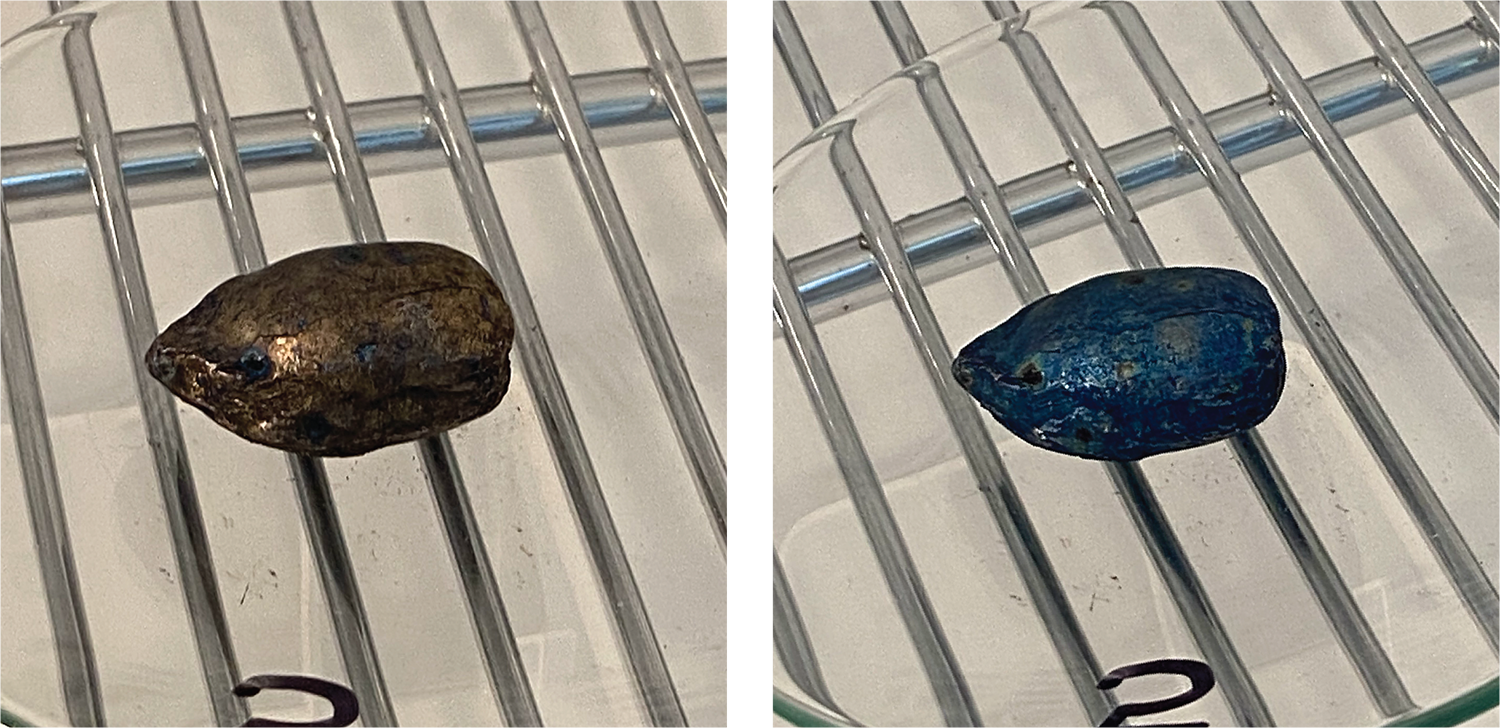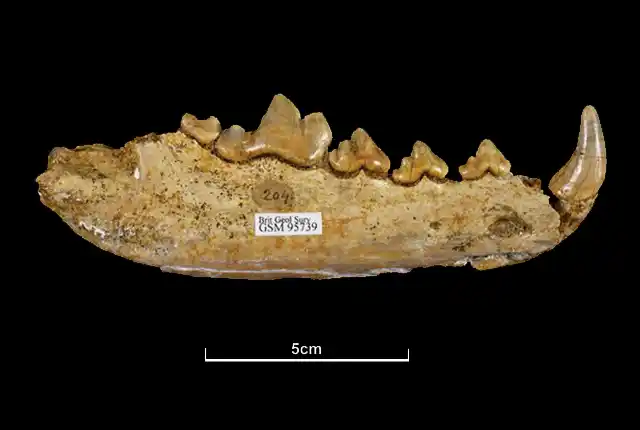Exploring the role of stable isotope geochemistry in nuclear forensics
Paulina Baranowska introduces her PhD research investigating the use of oxygen isotopes as a nuclear forensic signature.
09/10/2024 By BGS Press
My name is Paulina Baranowska and I’m a second year PhD student. My project is hosted at BGS, in collaboration with the University of Nottingham and funded by AWE.
Project aims
The aim of my PhD project is to advance nuclear forensic science by investigating the use of oxygen isotopes as a nuclear forensic signature, and to develop a novel technique to measure the oxygen composition of nuclear materials. I am using surface-science techniques to understand the impact of corrosion and exposure to varying environmental conditions on nuclear materials, and the influence this has on the oxygen isotope signature.
Surface-science techniques are valuable tools for assessing the effect of corrosion on materials and include:
- scanning electron microscopy (SEM)
- X-ray diffraction (XRD)
- X-ray photoelectron spectroscopy (XPS)
- thermogravimetric analysis (TGA)
Together, these techniques can provide a complete picture of how environmental changes affect both the surface and bulk of a studied material, and enhance our understanding of the forensic signatures incorporated by these materials. This understanding enables us to determine their origin and history more precisely.

A molybdenum pellet before and after corrosion. BGS © UKRI.
The project also aims to obtain a better understanding of how to design appropriate methods for oxygen isotope analysis using various analytical techniques. This research represents a novel and interdisciplinary approach to nuclear forensics that combines surface-science chemistry, material behaviour and stable-isotope geochemistry.
What is nuclear forensic science?
Nuclear forensic science focuses on the examination and identification of evidence to support governments in managing incidents involving nuclear and other radioactive materials ‘out of regulatory control’. This means incidents where nuclear or radioactive materials are not under prescribed regulatory oversight, supervision, or legal constraints, posing potential risks due to unauthorised possession, use or transfer.
A wide range of forensic signatures is used to assess the origin of materials and inform law enforcement for further investigation. The production route of a trafficked or lost material, including where, when and how the material was produced, can be found using various analytical techniques.
The role of oxygen isotopes
Using the oxygen isotope composition of materials for nuclear forensic purposes is a new and novel approach. Oxygen isotopes have been used as an environmental tracer for the past 70 years, as the balance of oxygen isotopes in natural materials is influenced by the prevailing climate and surrounding environment, including factors such as temperature, humidity and the source of water. This can provide insight into the geographical origin of materials or the conditions they have been exposed to, which is highly valuable to forensic investigations.
As natural materials form, they capture the oxygen isotope composition of the surrounding environment at the time of their formation, which is the basis of palaeoclimate research and environmental change reconstructions. However, this is also true for conditions and processes in modern environmental settings, including corrosion processes.

Scanning electron microscope image of molybdenum dioxide after corrosion. BGS © UKRI.
Corrosion involves a gradual deterioration of metal surfaces via a chemical reaction to reach a more chemically stable form (for example, oxidation of a metal to an oxide or hydroxide). The incorporation of a specific oxygen isotope composition in a corrosion product will reflect the ambient and geographic conditions that it formed under, providing a distinctive oxygen isotope signature that can be analysed to trace the material’s exposure history. Oxygen isotopes can therefore potentially be used as a forensic tracer to differentiate between different geographical origins of nuclear materials. Ultimately, this can help narrow down the source of an unknown material in a forensic investigation.

Elemental analyser-isotope ratio mass spectrometer (EA-IRMS) used to measure oxygen isotopes. BGS © UKRI.
Current analytical constraints limit the use of oxygen isotopes in nuclear forensic research, particularly in the context of uranium compound analysis. Classical and laser fluorination methods, commonly used for oxygen isotope analysis, suffer from limitations such as low sample throughput, low efficiency, large sample mass and the high risk associated with using the chemical reagents required to liberate the oxygen.
Given these challenges, elemental analyser-isotope ratio mass spectrometry (EA-IRMS) is considered an alternative option. My work aims to develop an automated method of analysing heavy metal oxides using EA-IRMS. The method combines surface-science techniques with isotope geochemistry to understand controls on the oxygen isotope composition in heavy metal oxides to assess the forensic signatures and the use of oxygen isotopes as a nuclear forensic tracer.
About the author
Paulina started her PhD after completing an MChem degree at Nottingham Trent University. Her master’s project focused on the analysis of radioactive elements in cosmetics from the 20th century, sparking her interest in radiochemistry. Prior to beginning her PhD, Paulina had the opportunity to work as a technician in a university laboratory, which reinforced her desire to work within analytical and nuclear chemistry and encouraged her to seek out a PhD project that combined these areas of science.
Relative topics
Related news

Modern pesticides found in UK rivers could pose risk to aquatic life
17/06/2025
New research shows that modern pesticides used in agriculture and veterinary medicines have been found for the first time in English rivers.

Exploring Scotland’s hidden energy potential with geology and geophysics: fieldwork in the Cairngorms
31/03/2025
BUFI student Innes Campbell discusses his research on Scotland’s radiothermal granites and how a fieldtrip with BGS helped further explore the subject.

Carbon and oxygen isotope analysis of carbonates and the development of new reference materials
18/12/2024
Dr Charlotte Hipkiss and Kotryna Savickaite explore the importance of standard analysis when testing carbon and oxygen samples.

Dynamics of land-to-lake transfers in the Lake Victoria Basin
09/12/2024
In June 2024, a UK/Kenya research team shared research findings from a collaborative, four-year field and experimental programme within Kenya.

Studying oxygen isotopes in sediments from Rutland Water Nature Reserve
20/11/2024
Chris Bengt visited Rutland Water as part of a project to determine human impact and environmental change in lake sediments.

Celebrating 25 years of technical excellence at the BGS Inorganic Geochemistry Facility
08/11/2024
The ISO/IEC 17025 accreditation is evidence of technical excellence and reliability, and a mark of quality assurance.

BGS chemists involved in new project developing early detection test for bladder cancer
15/10/2024
BGS is combining its expertise with researchers from Queen’s University Belfast, the University of Dhaka and the International Agency for Research on Cancer to further develop a urine-based early detection test.

Exploring the role of stable isotope geochemistry in nuclear forensics
09/10/2024
Paulina Baranowska introduces her PhD research investigating the use of oxygen isotopes as a nuclear forensic signature.

Laboratory life: my work experience week at BGS
20/08/2024
Aspiring astrophysicist Riveen Pehesara Kumanayaka shares his experience following an A-level work placement with BGS.

Extracting formation temperatures from stalagmites
14/08/2024
BGS’s Andrew Smith explores the karstic depressions of northern Spain in the quest to create a palaeothermometer.

New research supports conservation of fallow deer across Europe
16/04/2024
New research has combined zooarchaeology and ancient and modern biomolecular datasets to reveal a new understanding of the history and projections of fallow deer.

Hungry like a wolf: new insights from old bones housed in the BGS museum collections
18/01/2024
BGS scientists are studying the diets of ancient British wolves and how they adapted to changing environments.



